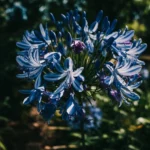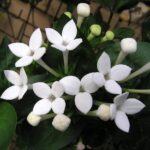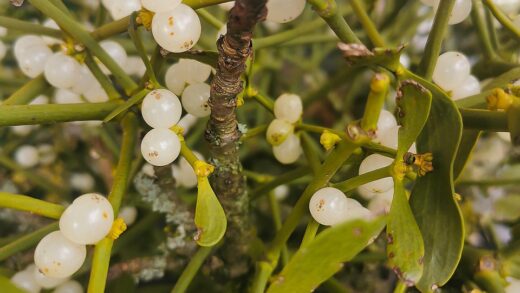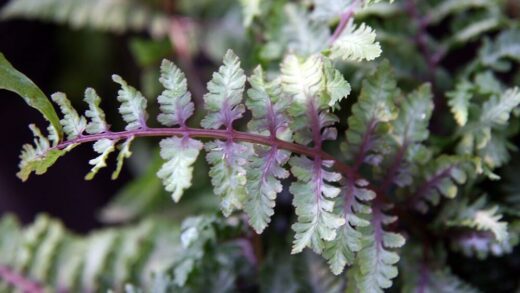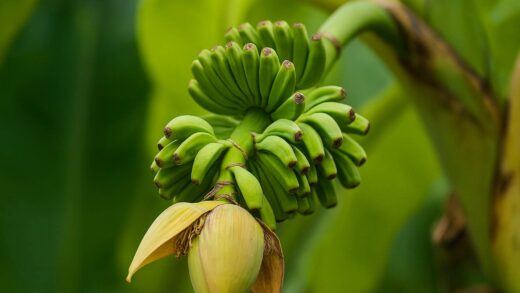For gardeners living in climates with cold winters, the process of overwintering a gardenia is a crucial annual ritual that ensures the survival of this tender, subtropical shrub. Gardenias are not frost-tolerant, and exposure to freezing temperatures can cause severe damage or even be fatal to the plant. Successfully guiding your gardenia through the winter months involves more than simply bringing it indoors; it requires a thoughtful transition and the creation of a suitable indoor environment that can sustain it until spring returns. This period of dormancy or semi-dormancy is a natural part of the plant’s lifecycle, and providing the right conditions during this time is essential for its long-term health and its ability to produce a spectacular display of flowers the following season.
The primary goal of overwintering is to protect the gardenia from the harsh conditions of winter while allowing it to rest. In its native habitat, it would experience cooler, drier seasons, but not freezing temperatures. Our aim is to replicate this restful period in an indoor setting. This means reducing water and ceasing fertilization to align with the plant’s slowed metabolism. It is a common mistake to try to force the plant to grow actively during the winter, which can deplete its energy reserves and lead to weak, leggy growth.
The transition from the outdoor environment to the indoor one must be handled with care. Gardenias are notoriously sensitive to sudden changes, and an abrupt move from a bright, humid outdoor location to a dry, dimly lit indoor one can shock the plant, causing leaf drop and general decline. A gradual acclimation process, where the plant is slowly introduced to the indoor conditions over a week or two, can significantly reduce this stress. This careful management of the transition sets the stage for a successful winter season indoors.
Once inside, the challenge is to provide an environment that meets the gardenia’s needs for cool temperatures, adequate light, and sufficient humidity. The typical modern home can be a difficult environment for a gardenia in winter, often being too warm and dry. Finding the right spot, away from heat sources and in a bright window, is key. Careful monitoring of the plant’s condition throughout the winter will allow you to make small adjustments to its care, ensuring it emerges in the spring healthy, rested, and ready for another season of growth.
Preparing for the transition indoors
The process of preparing your gardenia for its move indoors should begin well before the first frost is expected. Timing is crucial; you should aim to bring the plant inside when nighttime temperatures consistently start to drop below 10°C (50°F), but before there is any danger of frost. Waiting too long can expose the plant to cold damage, while moving it too early when it is still warm can make the transition to indoor conditions more jarring. Monitoring the weather forecast in early to mid-autumn is key to getting this timing right.
More articles on this topic
Before bringing the plant inside, it is essential to thoroughly inspect it for any pests. The warm, dry environment of a home can be an ideal breeding ground for insects like spider mites, mealybugs, and aphids, and a small, unnoticed population can quickly explode into a major infestation indoors. Carefully examine the stems, the leaf axils, and the undersides of all the leaves. It is a very good practice to treat the plant prophylactically by spraying it with insecticidal soap or horticultural oil a week or two before the move, ensuring you get good coverage over the entire plant.
This is also a good time to do some light pruning and cleaning of the plant. Trim away any dead, yellowing, or damaged leaves and branches. This not only improves the plant’s appearance but also removes potential hiding spots for pests and reduces the amount of foliage the plant needs to support with limited winter light. Wiping down the leaves with a damp cloth can remove any dust or grime that has accumulated over the summer, which helps the leaves to photosynthesize more efficiently in the lower light conditions indoors. Also, be sure to clean the exterior of the pot itself.
The final step in preparation is the acclimation process. Instead of moving the plant directly from its outdoor summer location to its final indoor winter spot, it is best to do it gradually over the course of about a week. Start by bringing the plant into a sheltered area, like a covered porch or garage, for a few hours each day, gradually increasing the amount of time it spends in the lower light and different humidity. Alternatively, you can bring it indoors at night and take it back out during the day. This slow introduction helps the plant adjust to the significant change in its environment, minimizing shock and leaf drop.
Creating the ideal indoor environment
Once your gardenia is ready to come inside for the winter, selecting the right location is the most important factor for its success. The ideal spot will provide a combination of bright light and cool temperatures. A south-facing or east-facing window is often the best choice, as it will provide the brightest available light during the short winter days. Insufficient light is one of the biggest challenges for overwintering gardenias, and it can lead to weak growth and leaf drop. If you do not have a location with enough natural light, you may need to supplement with a grow light.
More articles on this topic
Temperature is another critical component of the indoor winter environment. Gardenias prefer cool conditions during their winter rest period, ideally between 15-18°C (60-65°F) during the day and even a little cooler at night. A location that is too warm, such as near a radiator, heating vent, or fireplace, can prevent the plant from entering a proper dormancy and may encourage weak, spindly growth. A cool, bright room, such as a sunroom or a spare bedroom, is often a much better choice than a warm living room.
Low humidity is a major challenge in most homes during the winter when heating systems are running. Gardenias require high humidity to keep their leaves from drying out and to deter pests like spider mites. To increase the humidity around your plant, you can place it on a pebble tray. This involves filling a shallow tray with pebbles and water and setting the pot on top of the pebbles, ensuring the bottom of the pot is not sitting directly in the water. Running a humidifier in the room or grouping the gardenia with other houseplants can also help create a more humid microclimate.
Finally, ensure the plant has good air circulation but is protected from drafts. Stagnant air can encourage fungal diseases, but a direct draft from a window or vent will cause stress and can lead to leaf and bud drop. The location should be stable, as gardenias resent being moved around frequently once they have settled in a spot. Finding a location that meets all these criteria—bright, cool, humid, and draft-free—will give your gardenia the best possible chance of not just surviving, but thriving through the winter months.
Care during winter dormancy
Caring for your gardenia during its winter dormancy is fundamentally different from its care during the active growing season. The most significant change is in your watering routine. Because the plant’s growth has slowed and the light levels are lower, its water needs are drastically reduced. It is crucial to allow the soil to dry out more than you would in the summer. Check the soil moisture regularly, and only water when the top two inches feel dry to the touch. When you do water, do so thoroughly, but then ensure the pot drains completely and the saucer is emptied. Overwatering is the most common cause of failure for gardenias in the winter.
Alongside the reduction in watering, you must completely stop fertilizing the plant. The gardenia is not actively growing, so it does not require supplemental nutrients. Adding fertilizer to the soil of a dormant plant is not only unnecessary but can be harmful. The unused mineral salts can build up in the soil, potentially burning the sensitive roots and causing damage that will become apparent when the plant tries to resume growth in the spring. Do not resume your feeding schedule until you see clear signs of new growth in early spring.
Even though the plant is resting, it is still important to continue monitoring it for any signs of pests or disease. The indoor environment can sometimes favor pests that may have been dormant or in low numbers outdoors. Regularly inspect the undersides of leaves for spider mites or mealybugs. If you do spot any pests, treat them immediately using the least toxic method possible, such as wiping them off with a rubbing alcohol-soaked swab or spraying with insecticidal soap. Catching these problems early is key to preventing them from becoming a major issue.
As winter progresses, you may notice some natural leaf drop. It is normal for a gardenia to shed some of its older, inner leaves as it adjusts to the indoor environment and lower light levels. As long as the leaf drop is not excessive and the remaining foliage, particularly the new growth at the tips, looks healthy, there is usually no cause for alarm. Simply clean up the fallen leaves to maintain good hygiene around the plant. Resist the temptation to react to minor leaf drop with drastic changes in care, as consistency is key during this period.
Transitioning back outdoors in spring
Just as the move indoors required a gradual transition, so does the move back outdoors in the spring. When the danger of frost has passed and nighttime temperatures are consistently staying above 10°C (50°F), you can begin to prepare your gardenia for its return to the garden. Rushing this process can be just as shocking to the plant as the move indoors. An abrupt change from the sheltered indoor environment to the bright sun and wind of the outdoors can result in sunburn and stress. The key is to acclimate it slowly.
Start the process by placing the gardenia in a fully shaded and protected location outdoors for just an hour or two on the first day. A spot on a covered porch or under a dense tree is ideal. Over the next one to two weeks, gradually increase the amount of time the plant spends outside each day. At the same time, begin to slowly expose it to more direct sunlight, starting with the gentle morning sun. This process, known as hardening off, allows the leaves to adjust to the higher light intensity and the fluctuating outdoor temperatures.
As the plant becomes reacclimatized to the outdoor conditions, you can resume your normal care routine. This is the time to start increasing the frequency of your watering as the longer days and warmer temperatures will cause the soil to dry out more quickly. Once you see signs of vigorous new growth, you can begin your regular fertilization schedule again. Start with a half-strength dose of a balanced, acidic fertilizer and gradually increase to full strength over the next few applications.
Once the hardening-off process is complete and the plant is fully adjusted to being outdoors, you can move it to its final summer location. This should be a spot that provides the ideal conditions of bright, indirect light, especially protection from the harsh afternoon sun. The successful overwintering process, culminating in this careful transition back outdoors, will set your gardenia up for a healthy and productive growing season, rewarding your efforts with its beautiful and fragrant blooms.








